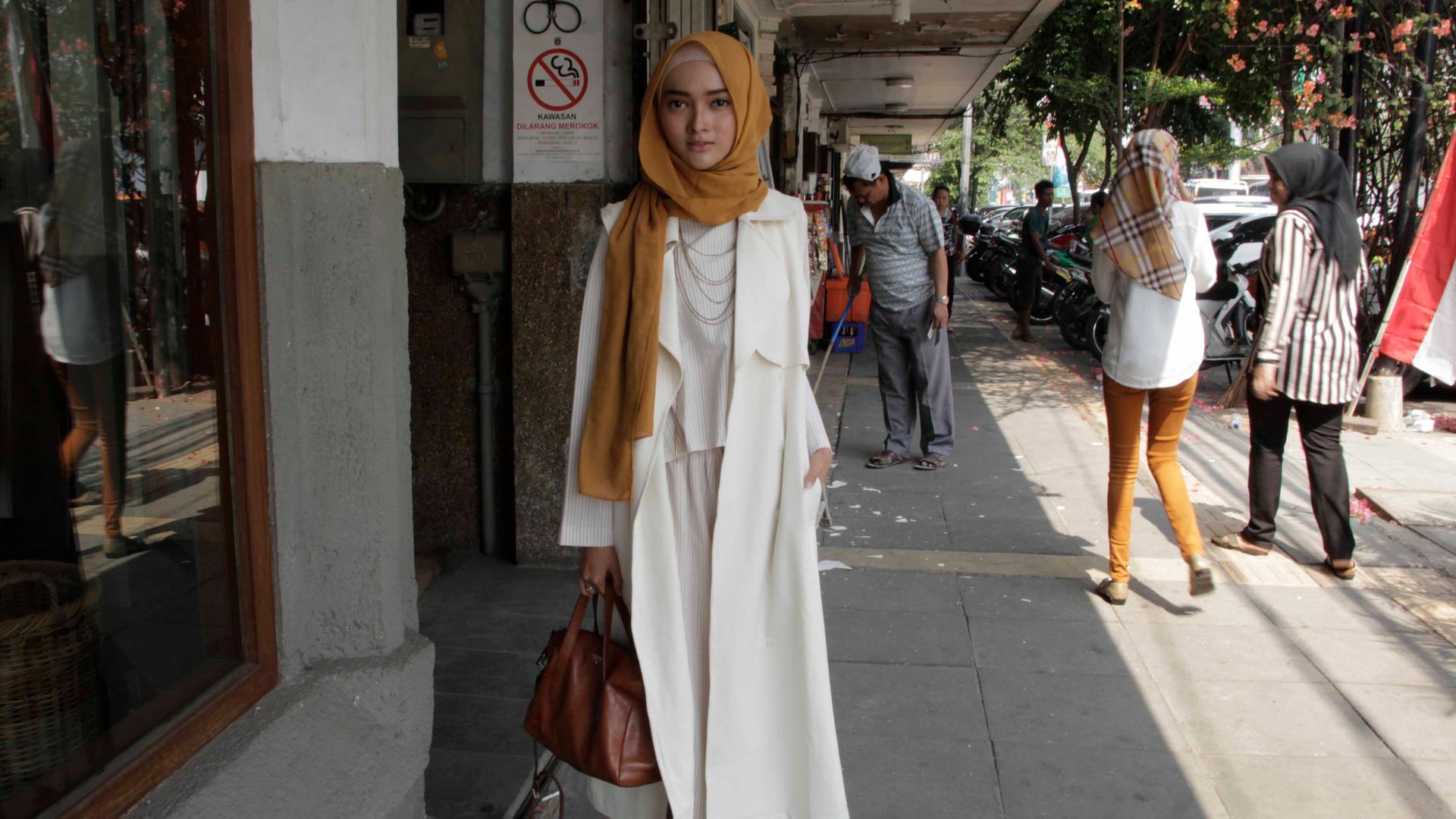Puteri Hasannah Karunia is a popular fashion blogger, one of Indonesia's generation of young Muslim fashionistas known as "hijabers."
Backward? Naive? Terrorists?
Puteri Hasannah Karunia says the West has an image of women who wear the hijab — a stereotype that the popular Indonesian fashion blogger is trying to change.
Through fashion.
At 26, and with more than 180,000 followers on Instagram, Karunia is part of a generation of young Muslim women here known as “hijabers” — fashionistas who proudly wear the headscarf and promote Islam’s modest dress code, with their own flair. Think animal print headscarves and brightly-colored dresses. They are also devout Muslims and proud of it.
Browsing the racks at a popular dress shop in the Menteng District of Jakarta, she makes her point by showing off a long, white dress, paired with a blush pink coat embroidered with flowers. “Itang Yunasz is not a Muslim designer,” Karunia says, referring to the designer. “But because the demand [for Muslim] fashion is so high Itang Yunasz [has] become a Muslim designer.”
Hijabers share fashion tips on social media with the hash tag “hijab.” They post “how-to” videos on YouTube. A quick search online reveals everything from tutorials on basic hijab fashion, to tips on how to pair the hijab with statement jewelry.
Karunia describes her look as “modest and simple.” The day we interview her, she’s wearing a mustard yellow headscarf. That’s paired with a long, white vest, striped pants and shirt, and brown, strappy heels.
“I’m trying to be classy actually, but I can’t,” she laughs. “I just can’t be a neon person.”
Most women you see in Indonesia now wear the headscarf. But Dewi Candraningrum, who teaches at Muhammadiyah University Surakarta, says it wasn’t always that way. She’s author of the book “Negotiating Women’s Veiling,” and she says the hijab was actively discouraged for three decades, during the Suharto era, despite Indonesia being the largest Muslim country in the world. After Suharto was toppled in the late ’90s, the headscarf became a symbol of freedom for women. Since then, Candraningrum says conservative activists have pushed to make veiling mandatory.
With more and more Indonesian women opting to wear headscarves, there’s a thriving hijab fashion scene. It’s so popular, even secular companies are cashing in. This summer, Japanese retailer Uniqlo hired a popular Muslim blogger Hana Tajima to design a modest clothing line.
But the increasing popularity of the hijab has made some Indonesians uneasy. 32-year old Inaya Wahid, the daughter of former President Abdurrahman Wahid, describes herself as a “moderate” Muslim and doesn’t wear the hijab. She says the “inclusive” brand of Islam her late father championed in the late 90s, is increasingly under attack.
She’s even been targeted.
“I’ve been receiving a lot of mentions on my Twitter or Facebook or my other social media condemning me for not wearing a hijab,” Wahid says. She adds that some students now just wear the headscarf so they don’t get bullied at school.
Wahid also sees the headscarf as a symbol of the Arab world’s growing influence here. More Indonesians are traveling to the Middle East and watching Arab TV online, she says, and it’s affecting Indonesian pop culture.
“Before… TV soap operas were filled with women with a very short skirt,” she says. “Suddenly, the protagonist, the good one, is wearing a hijab and the other, the antagonist, is not.”
You might think that Muslim clerics here would be happy with this trend. But some have denounced hijab fashion. They say the correct hijab should be long and cover a woman’s body. It shouldn’t be colorful or patterned.
Karunia says she’s heard the criticism, but she brushes it off.
“It doesn’t matter how long we wear our hijab, as long as we do not show our skin, we do not show our hair, we do not show our boobs, we do not show our butt and we do not show all of our body,” she says. “That’s the correct hijab for us.”
The government doesn’t seem to think it matters either. They’ve announced plans to export Indonesia’s Muslim designs to other Asian countries and Europe, where Islamic fashion is already a $1.5 billion industry. Indonesia’s hoping to build on that, by becoming the global capital of Islamic fashion, by 2020.
